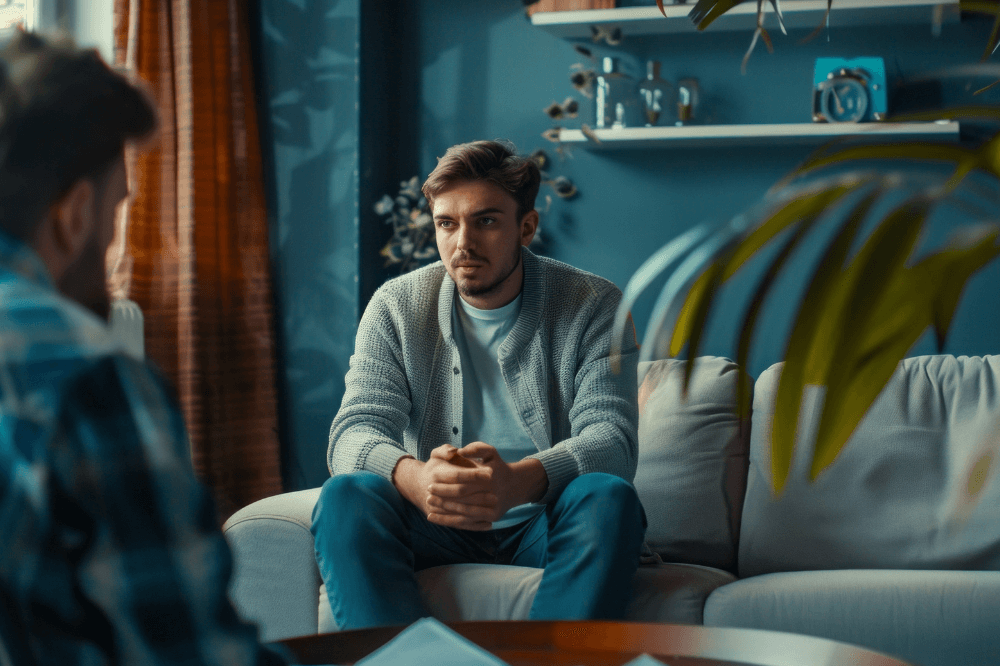Anxiety is a natural response to stress or danger—it’s the body’s way of preparing for challenges. Feeling anxious before a big presentation or during a stressful event is entirely normal. But when anxiety becomes persistent, overwhelming, or appears without an obvious cause, it can interfere with daily life. Millions of people experience anxiety in different forms, from occasional worry to debilitating fear that disrupts work, relationships, and overall well-being.
This article will explore the symptoms, causes, and types of anxiety, helping you better understand this common yet often misunderstood condition.
What Are the Symptoms of Anxiety?
Anxiety affects people in different ways. Some experience occasional nervousness, while others struggle with persistent, overwhelming anxiety that interferes with daily life.
Common symptoms include:
Physical Symptoms
When anxiety kicks in, the body goes into fight-or-flight mode, causing a rapid heartbeat, sweating, dizziness, and muscle tension. Shortness of breath and digestive issues like nausea or stomach pain are also common. Many people feel fatigued or experience headaches, sometimes mistaking anxiety symptoms for medical conditions like heart or respiratory problems.
Emotional Symptoms
Excessive worry, fear, and irritability are common emotional signs of anxiety. Some people feel a constant sense of impending doom, even without a clear reason. Managing uncertainty becomes difficult, and small concerns can feel overwhelming, leading to mood swings and frustration in daily interactions.
Cognitive Symptoms
Anxiety can make it hard to concentrate, leading to racing thoughts and indecisiveness. The mind often fixates on “what-if” scenarios, overanalyzing situations and second-guessing decisions. This mental fog can interfere with work, school, and personal life, making even simple tasks feel exhausting.

Behavioral Symptoms
Many people with anxiety avoid situations that trigger stress, whether it’s social gatherings, work tasks, or even phone calls. Sleep issues are also common, as racing thoughts prevent relaxation. Some develop compulsive habits—like repeatedly checking things or sticking to rigid routines—to feel in control.
These symptoms can range from mild to severe, and their impact varies from person to person. According to the National Institute of Mental Health (NIMH), nearly 30% of adults in the U.S. experience an anxiety disorder at some point in their lives.
What Causes Anxiety?
Anxiety doesn’t have a single cause—it develops from a mix of biological, psychological, and environmental factors. While some people may be more prone to anxiety due to genetics, others may develop it due to life experiences or health conditions. Understanding these contributing factors can help in managing anxiety more effectively.
Genetics
If anxiety runs in your family, you may be more likely to experience it yourself. Genetics plays a significant role in shaping how our brain responds to stress. However, having a family history of anxiety doesn’t guarantee that someone will develop an anxiety disorder—it simply increases the risk.
Brain Chemistry
The brain relies on neurotransmitters like serotonin, dopamine, and GABA to regulate mood and stress responses. When these chemicals become imbalanced, it can make the brain more sensitive to stress, leading to heightened anxiety. This is why some anxiety treatments, such as medication and therapy, focus on restoring balance to these neurotransmitters.
Life Experiences
Difficult experiences—especially in childhood—can have a lasting impact on mental health. Trauma, abuse, bullying, or prolonged stress from work, relationships, or financial struggles can all contribute to the development of anxiety disorders. Even seemingly small stressors, when accumulated over time, can push the brain into a state of heightened anxiety.
Medical Conditions
Certain health conditions can trigger or worsen anxiety. Chronic illnesses such as heart disease, diabetes, thyroid disorders, and chronic pain often come with physical discomfort and uncertainty, which can contribute to anxiety symptoms. In some cases, anxiety may also be a side effect of medication or an indicator of an undiagnosed medical condition.
Substance Use
Alcohol, caffeine, and recreational drugs can have a significant impact on anxiety levels. While some people use substances to cope with stress, they often make anxiety worse in the long run. For example, caffeine can overstimulate the nervous system, leading to jitters and racing thoughts, while withdrawal from alcohol or nicotine can cause intense anxiety episodes.
Anxiety can stem from multiple sources, and often, these factors interact with one another. Identifying what contributes to anxiety is an important step in finding effective ways to manage it.
What Are the Different Types of Anxiety Disorders?
Anxiety isn’t a one-size-fits-all experience—it comes in different forms, each with its own challenges.
Generalized Anxiety Disorder (GAD)
People with GAD experience persistent, excessive worry about everyday situations, even when there’s no clear reason for concern. This ongoing anxiety can make it hard to relax, concentrate, or sleep.
Panic Disorder
Panic attacks are sudden, intense episodes of fear that can feel overwhelming. They often come with physical symptoms like a racing heart, dizziness, chest pain, and shortness of breath. Some people even mistake them for heart attacks, which adds to the distress.
Social Anxiety Disorder
This condition goes beyond shyness—it’s an intense fear of being judged, embarrassed, or humiliated in social situations. It can make everyday interactions, like speaking in meetings or attending social events, feel unbearable.
Obsessive-Compulsive Disorder (OCD)
OCD involves unwanted, repetitive thoughts (obsessions) that cause anxiety, leading to compulsive behaviors aimed at easing the distress. Common compulsions include excessive handwashing, checking locks repeatedly, or following strict routines.
Post-Traumatic Stress Disorder (PTSD)
PTSD develops after experiencing or witnessing a traumatic event, such as an accident, assault, or natural disaster. People with PTSD may have flashbacks, nightmares, and heightened anxiety long after the event has passed.
Phobias
Phobias are extreme fears of specific objects or situations, like heights, flying, or spiders. These fears can be so intense that they lead to avoidance behaviors, impacting daily life.
Anxiety disorders can range from mild to severe, affecting people of all ages. While occasional anxiety is normal, persistent or overwhelming symptoms may require support and treatment. Understanding these different types can be the first step toward finding effective coping strategies.




